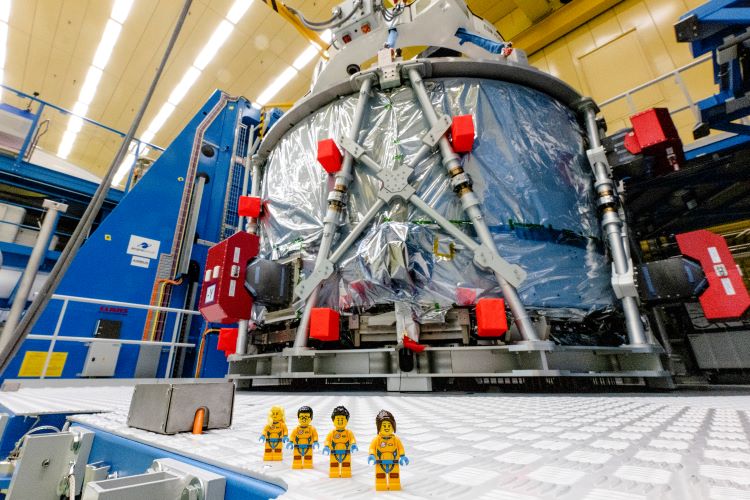Engineers at NASA’s Jet Propulsion Laboratory (NASA-JPL) are busy keeping the Perseverance rover and Ingenuity helicopter functioning in Jezero Crater on Mars while these robotic explorers continue the search for ancient microbial life on the Red Planet. But some of those same engineers have also been busy working with LEGO designers on new one-tenth-scale LEGO Technic buildable models of these very same robotic explorers with the goal of inspiring the next generation of NASA scientists and engineers.
The collaborative effort demonstrates NASA’s ongoing commitment on working with the private sector to share ideas and technical expertise through JPL’s Technology Affiliates Program and Caltech’s Office of Technology Transfer and Corporate Partnerships. For this new STEM-themed LEGO kit, LEGO designers sought to learn about the engineering aspects of both Perseverance and Ingenuity to design and build the most accurate LEGO models.
“Our Mars missions began decades ago with an idea so big; many thought it was impossible. Today, we’ve successfully landed rovers and even a helicopter on Mars to explore the climate, geology, and possibility of life on the Red Planet,” said JPL Director Laurie Leshin in a June 22 statement. “At JPL, we dream big and push boundaries as we seek to answer awe-inspiring scientific questions. I hope these kinds of toys spark the same spirit of exploration within kids that we have here at NASA’s JPL.”

NASA and LEGO have a rich partnership history dating back to the 1990s of designing and building LEGO sets to inspire the next generation of scientists and engineers. These include models of the Apollo 11 Lunar Lander, Space Shuttle Discovery and Hubble, Saturn V, James Webb Space Telescope, Rocket Launch Center, and most recently announced the potential for a LEGO Moon Map.
LEGO figures have even been sent to space, as NASA’s Juno mission to Jupiter had LEGO figures of the Roman god Jupiter, his wife Juno, and Italian astronomer Galileo Galilei attached to the spacecraft. Most recently, four LEGO figures flew on the Artemis I mission.


The Perseverance rover with the Ingenuity helicopter onboard touched down in Jezero Crater on February 18, 2021, and have been instrumental in providing new insights into what ancient Mars might have been like billions of years ago. During its almost two and a half years on the Red Planet, Perseverance has driven 18.87 km (11.72 miles) while collecting samples and dropping sample tubes in preparation for a Mars Sample Return mission one day. The Ingenuity helicopter conducted its first flight on Mars on April 19, 2021, and has completed 51 flights while accumulating 91.4 flying minutes over 11.7 km (7.3 miles) and flying as high as 18.0 m (59.1 ft).
What new LEGO sets will inspire the next generation of scientists and engineers in the coming years and decades? Only time will tell, and this is why we science!
As always, keep doing science & keep looking up!
The post NASA and LEGO Continue Brick-Solid Partnership with Perseverance and Ingenuity LEGO Models appeared first on Universe Today.
from Universe Today https://ift.tt/8HA5XTm
via IFTTT
Comments
Post a Comment